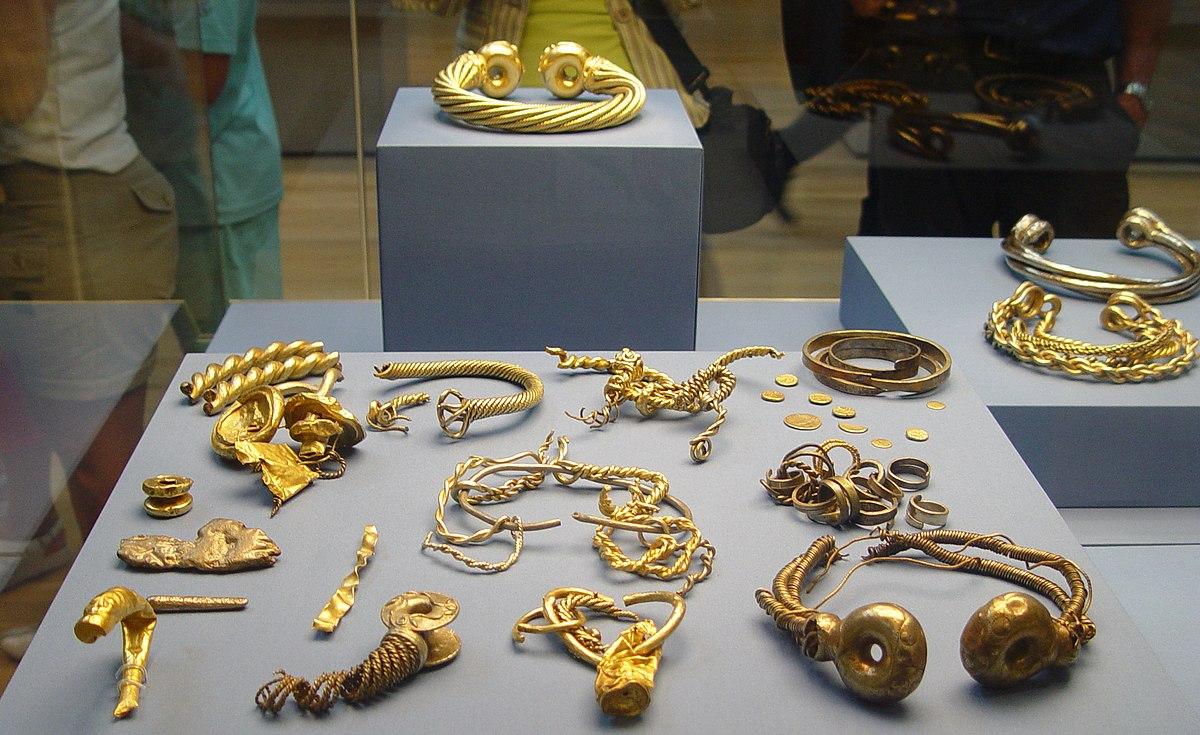
The Snettisham Hoard on display at the British Museum. The hoard contains hundreds of pieces of gold and other metal objects including about 70 intact torcs. License
Though often overshadowed by the grand architectural and artistic achievements of the Roman period, the artists and craftspeople of the British Iron Age produced some of the most technically impressive materials in European history.
The British peoples of this time did not utilize a written form of their language, and so, the materials they left behind are the only primary examples of evidence we have of their lives and societies. These materials, however, are by no means lacking in their quality, beauty, and ability to tell us much about those who once used them.
Of particular note was their ability to create objects of gold and silver in exquisite detail. From intricate jewelry to decorative arms and armament, the level of skill required to craft many of Iron Age Britain’s finest treasures was no short of masterful. Read on below to learn about some of the most significant objects and collections of the British Iron Age.
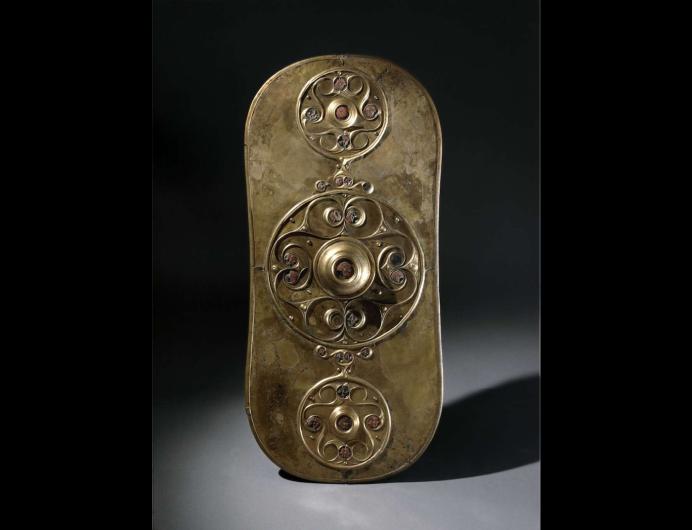
Dating to sometime between 350 and 50 BCE, the Battersea Shield is one of the most important examples of Iron Age art from Britain. Constructed from several pieces of bronze fit together by rivets cleverly hidden under the decorative elements, the shield overlay displays finely detailed swirling motifs and 27 raised bronze “compartments” filled with red glass enamel.
It was recovered from the River Thames in 1857, dredged from the riverbed, during the construction of a bridge. Along with the shield, workers also discovered large quantities of other Iron Age objects, as well as Roman weapons and many skeletons in the river.
Early historians were quick to conclude that the location of Caesar’s Thames crossing in 54 BCE had been located. However, it is now more commonly thought that the shield had been deposited as a votive offering and that the mixture of remains was more likely due to the river’s movement than simultaneous deposition during a common event.
Scholars have also noted that, although the bronze plate overlay would have originally been affixed to a wooden shield, it is too thin to have provided any sort of pragmatic protection in battle. Thus, the shield was most likely created as a prestige item intended for special occasions or religious purposes.
Image: The Battersea Shield measures 30.59 inches tall and 14.05 inches wide. The bronze plate seen here would have once been adhered to a wooden shield.
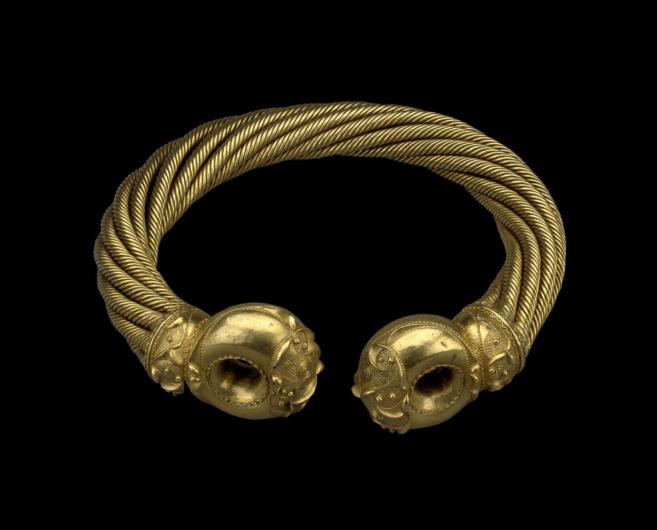
The Snettisham Hoard, found in county Norfolk between 1948 and 1973, consists of some of the finest examples of gold, silver, copper, and jet jewelry from Iron Age Britain. The entirety of the hoard has come to number nearly 175 torcs (with about 75 being intact), over 100 rings and bracelets, 170 coins, ingots and other pieces of metal, and is dated to about 70 BCE, roughly 16 years before the first Roman army set foot on the island.
Though the exact origins of the hoard are unknown, scholars have noted that the quality of the materials is so high that it is not impossible to posit the materials may have belonged to the royal family of the local Iceni tribe– the same tribe who, under their queen Boudica, would later lead a revolt against the Romans.
Much of the jewelry within this hoard is made of thin, twisting strands of gold and silver, and many pieces display the intricate swirling designs particular to the British Iron Age.
The so-called Great Torc was one piece discovered completely intact. It is emblematic of the style particular to this time period and is a true testament to the advanced metalworking skill of the craftspeople producing these objects.
Image: The Great Torc from the Snettisham Hoard. The torc, a type of necklace, weighs over 2 lbs and is made from 64 individual threads of twisted electrum (a gold and silver alloy) welded onto detailed ends.
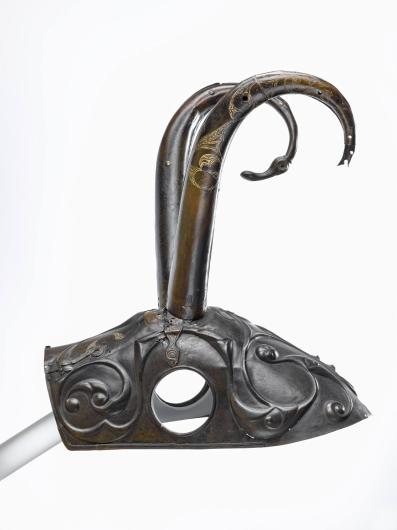
Though the exact nature of the relationship between the Torrs Pony-cap and its horns has been debated– some propose the horns were added as a conservational intervention, while others contend they were added to the cap in antiquity– the quality of the object and the skill required to craft it are irrefutable.
The cap and horns are most commonly dated to around 200 BCE, with the cap pre-dating the horns, and were discovered in a peat bog at Torrs Loch in Scotland. The bronze pony-cap– a type of facial armament worn by horses in battle– is decorated in repoussé with swirling spirals, vegetal motifs, and bird heads, while the horns are engraved in asymmetrical designs with the one complete end terminating in a bird head.
The holes on the sides of the cap would have been for the ears of the horse. The cap has been noted as reflecting similar items found on the European continent, however, the execution of this particular piece is distinct to the British Isles and Ireland.
Image: The Torrs Pony-cap and Horns, ca. 200 BCE. The cap would have been worn by a horse for protection during battle, its ears coming through the holes on the side. It has also been suggested that a human user could have been possible during ritual events, with leather straps fixing it to the head of the wearer.
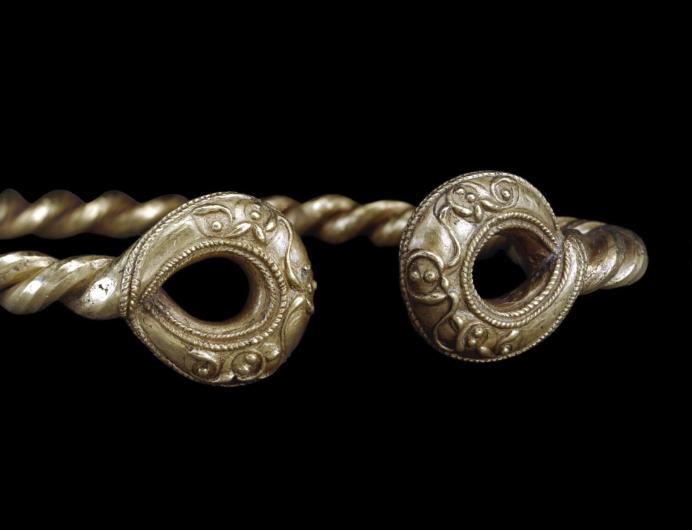
The second hoard to come from the town of Ipswich, the Ipswich Torcs number six in total, five of which were discovered by construction workers at a housing development site in 1968, and one which was discovered in 1969 by one of the occupants of the newly constructed homes.
All are of a gold alloy and date to roughly 150-50 BCE. In terms of the quality of these torcs, they have been noted as being second only to the Snettisham Hoard. Each is made from two thick, twisting strands of gold with decorated looped terminals attached at the ends.
These looped terminals were created with the lost-wax technique, allowing the artisan to add a high level of detail to their design. Each torc, though drawing on a similar decorative style, is unique from the others.
Image: A detail of one of the Ipswich Torcs, dating to 150-50 BCE. The decorative elements on the ends of these torcs were made using the lost-wax method, allowing for high relief details.
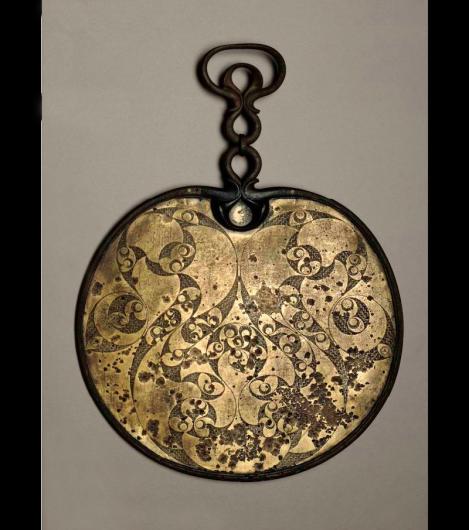
Iron mirrors were in use in Britain as early as the 3rd century BCE, and not long after, mirrors of polished bronze became popular. Mirror handles were often made in cast bronze or iron, and the backs of the polished bronze reflective surfaces were decorated with elaborate designs.
It has been suggested that these mirrors, when not in use, could have been hung on walls for their decorative elements. One mirror from Desborough is a particularly fine example. The handle and mirror frame are both of cast bronze, while the decorated backing was made by engraving the surface in various patterns in order to make the designs stand out against the surface.
Mirrors of this kind are often seen as emblematic of Celtic art and are noted as being extremely rare on the continent, thus representing a uniquely British object. Such objects would have denoted great status for the owner.
Image: The Desborough Mirror, ca. 50 BCE-50CE. The designs on the back of this polished bronze.
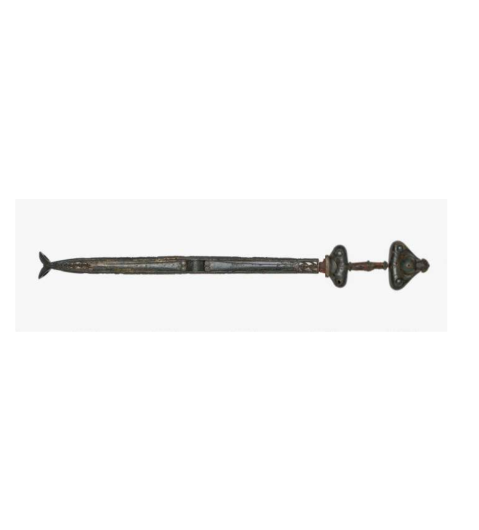
The metalworking expertise of the British Iron Age extended beyond personal ornament and can be seen on many examples of weaponry as well. The Asby Scar Sword, dating to the first century BCE, is a prime example. The iron sword, now corroded and broken, was nestled into a decorative bronze scabbard, and the two measured 822 mm from end to end when together.
The handle is elaborately decorated, made of a wooden base encased in bronze. The hilt is a crown-shaped cast bronze piece, and the collar, the last piece before the iron blade, is decorated with red glass enamel in an alternating triangular pattern.
All of these pieces are finely decorated with intricate designs made both by repoussé and engraving. The bronze scabbard is similarly adorned, utilizing red glass enamel set into swirling designs at the top, while the base of the scabbard is shaped like a whale’s tail.
As the blade itself is corroded into the scabbard, it is impossible to say if this sword ever saw battle. However, it can be said with certainty that this was no ordinary example and would have likely belonged to someone of great wealth and or importance.
Image: The Asby Scar Sword, dated to the 1st century BCE. The sword is finely decorated and makes use of many iconic Celtic decorative motifs and techniques.
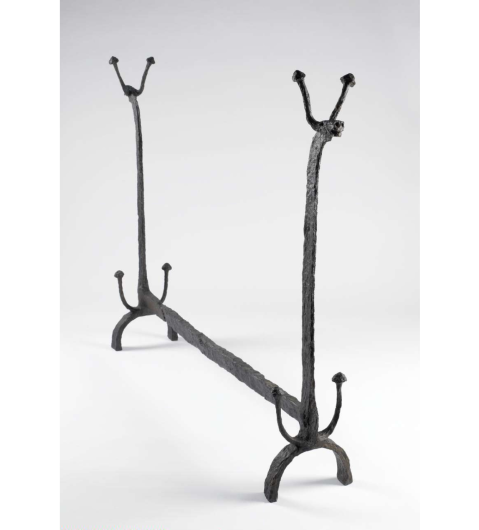
Fire-dogs refer generally to a kind of Iron Age hearth utilized to contain fires or cook over and with. Unlike modern hearths, those of the British Iron Age were in the center of rooms, thus allowing for a full 360 view of the hearth furniture.
Fire-dogs were crafted with this in mind and had decorative motifs on all sides. Accordingly, the tops of fire-dog posts were typically adorned with stylized animal heads, often bulls.
This pictured example, dated to about 50-25 BCE and coming from a grave in Welwyn, may have been used to spit-roast meats over a hearth fire. Curators of this piece have highlighted that the complex construction of this iron fire-dog is a testament to the forging skills of the individual(s) who made it.
Not many examples of fire-dogs have been discovered, and they have thus been thought of as prestige items belonging to individuals who may have had the opportunity to host banquets and large communal meals.
Image: An Iron Fire-dog from Welwyn, dated to 50-25 BCE. Fire-dogs were hearth furniture used to help contain the wood for fires and could also have been used to roast meats.
Danielle Vander Horst
Dani is a freelance artist, writer, and archaeologist. Her research specialty focuses on religion in the Roman Northwest, but she has formal training more broadly in Roman art, architecture, materiality, and history. Her other interests lie in archaeological theory and public education/reception of the ancient world. She holds multiple degrees in Classical Archaeology from the University of Rochester, Cornell University, and Duke University.























